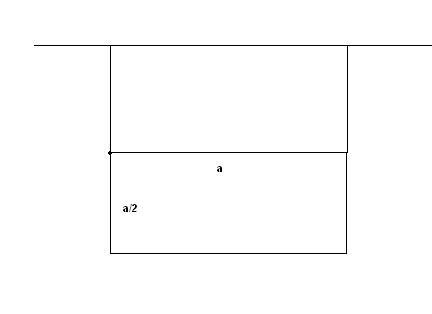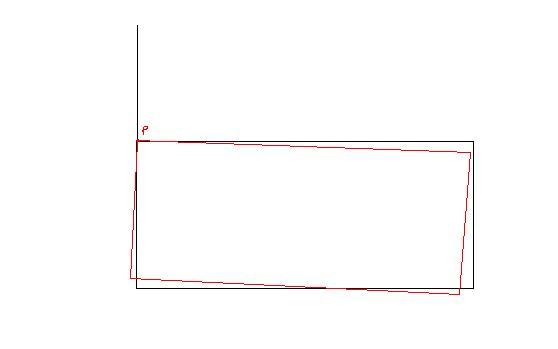hey guys .....
both of u are repeating same point again and again........
try to prove wahtever u r saying....oterwise this discussion is heading nowhere
Q) the uniform rectangular (laminar) block in the figure has mass M and dimensions [a,a/2]
which is supported by two massless inelastic strings of equal length whose other ends are attached to a rigid ceiling
Find the angular acceleration (α) and the acceleration of the center of mass (acm) immediately after one of the strings is cut.

edit : removed everything except the question to make it a neat and tidy reading :)
hey guys .....
both of u are repeating same point again and again........
try to prove wahtever u r saying....oterwise this discussion is heading nowhere
in ur diagram u hav mentioned direction of velocity of point P wrong.....i thimk it must move left to facilitate the movement of com down
what rubbish dont you know that :
\vec{v}= \vec{\omega }\times \vec{r}
ohk......but see without making P move the com can come down....i wont be angered by your harsh words :)
Let me give a small example..
Just because velocity is zero.. does it mean that acceleration is zero?
In the same way..
Just because displacement is zero.. does it mean that velocity is zero?
sir,but philip argued that P will acquire a velocity....just becoz centre of mass is moving down.............whereas the com can move down ....without the movement of P.....just like hinged motion about P
i am still not getting the concept behind the movement of P.....
i agree to the solution given by philip...............
i will agee it whole heartedly, only wen someone convinces,wat initiates P to move toward right
philip bhai....v =r*w.....only can decide the direction of velocity of P(if at all it moves)...........that i agree ,is toward right
reply to #38
the rigidity of the solid ..
and also one more thing ... which will be left for an exercise to someone who's not getting the thing on the first look
well philip....i do agree centre of mass must move down...but it can be achieved wen P is stationary itself...
i just cant understand the logic why P is moving rightward....
let me do the recap...........
philip said:" point P has to move roghtward coz centre of mass comes down"
but centre of mass can come down without point P moving(please see the diagramin #28) like hinged rotation ...which makes axis passing thru point P the 'IAOR'
...........
sigh ..
I really dont think there is anything left to prove but still specially for you xyz...
"but centre of mass can come down without point P moving"
just tell me how ? your diagram suggests that it cant .
and just relax and think for a moment
1 ) if CoM was to come vertically down and P was to remain where it is will not the block tear apart ? post # 40
2 ) if P was at rest ω (cross) r will give the velocity of the CoM as _|_ to the line joining P and CoM which is NOT vertically downwards .. #29 and 37
if you still dont get it im sorry i know of no more physics or maths than this ...then ask nishant bhaiyya or someone
yaar priyam wahi toh mujhe samajh nahi aa raha hai ki
eureka or karna(xyz) kya nahi samajh paa raha hain
only at the initial time.. but after wards there will be a force component due to the string in the horizontal direction..
come on dudes this is too much for such a simple sum
after cutting the strings the rod starts to rotate abt the other sting so using torque eq abt that pnt .. mgl/2=ia or mgl/2=ml^3@
now we know@ for gods sake a=@r .... no need for such complex calcultions
hey philip......just after cutting it will be rotation abt pt P..which will be fixed at that instant....
why are we complicating things ??
i think,
the com is in pure rotation abt the uncut end,atonce the string is cut.
torque due to gravity=Iabt the uncut end .angular acceleration of the com
Hint: Just after cutting, say, the right string, take the moments of the forces about the point where the lamina is connected to the thread and get the angular acceleration.
about the other point(uncut thread ),mg will be the only force that will provide the torque........
mga/2 = 15ma2/48 * alpha
alpha = 24g/15a
The situation after cutting string could be like this...
The COM of bolck is on circular path about the point P which is on lower most point of string string...now it arrives in a condn after which both string and block move to and fro just like pendullum